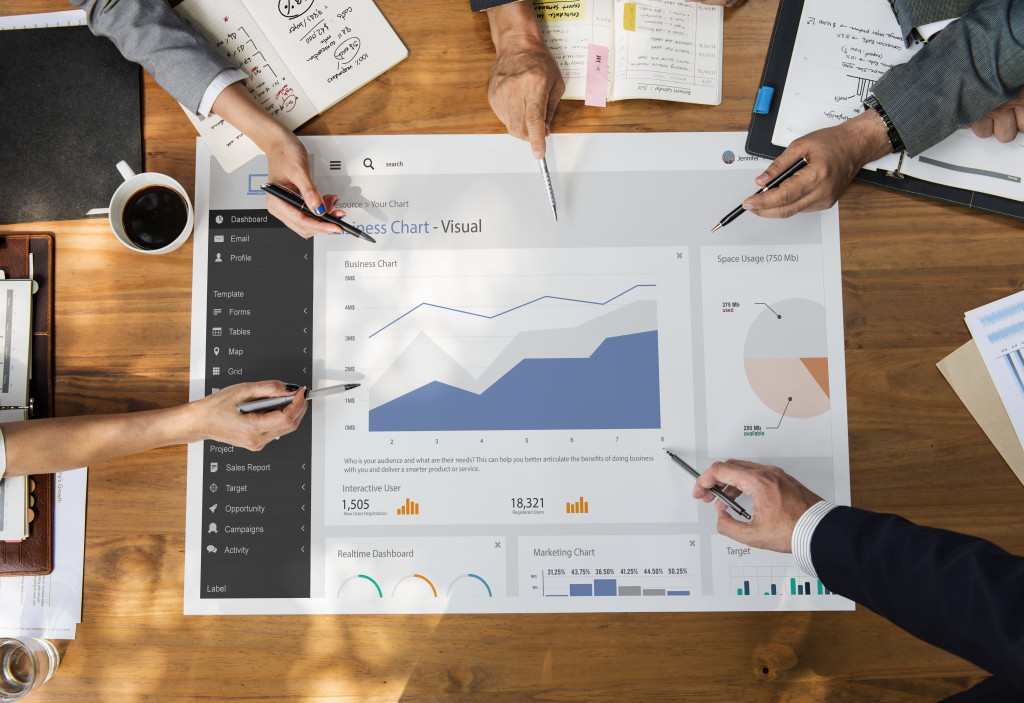- Data analytics can provide valuable insights for businesses to measure performance, identify trends, and optimize strategies.
- Companies can leverage data to make informed decisions, improve productivity, reduce costs, and provide better customer experiences.
- To implement data analytics in business, relevant data sources must be identified and integrated into a central repository.
- Technology tools can help businesses explore their data in-depth, visualize trends and correlations, and communicate insights effectively.
- Data-driven insights can help businesses maximize ROI in digital marketing campaigns by analyzing consumer behavior and measuring key performance indicators.
In today’s fast-paced world, businesses and organizations that know how to harness data analytics have a better chance of success. The ability to mine, analyze, and decipher insights from vast amounts of data has become a crucial skill in business and technology. With the ever-increasing volume of data available, the value of insights derived from data analysis cannot be overemphasized.
Data and analytics play a crucial role in both business and technology. These powerful tools provide valuable insights that enable businesses to make informed decisions and drive growth. With data-driven insights, companies can identify trends, measure performance, and optimize their strategies to achieve better outcomes.
This article will explore the benefits of using data-driven insights and how they can help businesses gain a competitive edge. Whether you’re a small business owner or a large corporation, leveraging data and analytics can help you harness the power of information to drive success.
Understanding Data Analytics
Data analytics analyzes and interprets data to gain insights and make informed decisions. Different types of data, including structured and unstructured, can be used to derive insights. Structured data refers to data that can be easily organized, such as numbers, addresses, or codes.
Unstructured data, on the other hand, is more complex and cannot be easily tagged or categorized. Examples of unstructured data include videos, photos, and social media posts. Analyzing and interpreting this kind of data requires specialized tools and techniques.
Data Analysis Techniques and Tools
One of the most common techniques used in data analytics is predictive modeling. Predictive modeling is a statistical process that uses historical data to predict future events. Other techniques include data mining and visualization, which help to uncover patterns and trends in data that are not easily visible to the naked eye.
Several tools are used in data analytics, including Microsoft Excel, Google Analytics, and Tableau. These tools help to process and analyze data, enabling businesses to gain insights and make informed decisions.
Benefits of Data-driven Decision Making
Data-driven decision-making is basing business decisions on data analysis rather than gut feeling or intuition. This approach helps businesses to optimize their operations, increase productivity, and reduce costs. By using data to make objective decisions, companies can identify areas for improvement, prioritize resources, and avoid making costly mistakes.
It also helps businesses to provide better customer experiences by understanding their needs, preferences, and behaviors.
Implementing Data Analytics in Business
Collecting and Organizing Data for Analysis
Before data can be analyzed, it must be collected and organized. This requires identifying and selecting relevant data sources and integrating them into a central data repository. This data can be structured or unstructured, and the data must be pre-processed to ensure it is accurate, complete, and consistent across all sources.
Analyzing Data to Gain Insights
Once the data is collected and organized, it is time to analyze it. This can be done using various analytics techniques, such as descriptive, predictive, and prescriptive. Descriptive analytics helps to summarize data, providing an overview of what has occurred.
Predictive analytics uses historical data to forecast future trends or identify potential opportunities or threats. Prescriptive analytics, on the other hand, provides actionable insights that can help businesses optimize their operations and improve decision-making.
Utilizing Insights to Inform Business Decisions
The insights gained from analytics can be used to optimize business operations, improve customer satisfaction, and identify new opportunities. Data analytics can help businesses make informed decisions about everything from marketing campaigns to supply chain management.
The insights gained from analytics can help businesses stay ahead of their competitors, identify potential problems before they occur, and respond quickly to changing market conditions.

Technology Tools and Resources for Data Analysis
Numerous technology tools are available for data analysis, ranging from essential visualization tools like Microsoft Excel and Google Sheets to more advanced platforms like Tableau and Power BI. These tools allow businesses to explore their data in-depth, visualize trends and correlations, and communicate insights effectively.
Integrating data analytics tools into business workflows is another critical consideration. This may involve incorporating analytics tools into existing software systems or workflows.
For example, businesses might integrate data analytics tools into their CRM systems to improve customer segmentation and targeting or integrate data analytics tools into their supply chain management software to identify inefficiencies and optimization opportunities.
Maximizing ROI with Data-Driven Insights
The role of data and analytics in digital marketing cannot be overstated. By analyzing consumer data, businesses can gain insights into consumer behavior, preferences, and attitudes. This information can be used to design targeted marketing campaigns that resonate with consumers and drive conversion rates.
Understanding and measuring ROI in digital marketing campaigns is also critical. By tracking key performance indicators such as click-through rates, conversion rates, and cost per acquisition, businesses can measure the effectiveness of their marketing campaigns and optimize them for maximum ROI.
Working with an ROI-focused digital marketing agency can also be valuable. These agencies design and execute digital marketing campaigns tailored to businesses’ unique needs and goals. By leveraging data and analytics, these agencies can help companies to maximize their marketing ROI and stay ahead of the competition.

Data analytics has become an essential tool in business and technology. By understanding the different types of data, analyzing techniques and tools, and using data-driven decision-making, companies can derive insights to drive innovation, optimize operations and create better customer experiences.
With the ever-increasing volume of data available, the need for data analytics continues to grow, and its value cannot be overemphasized. Businesses and organizations that take advantage of the power of insights derived from data analytics will stand to benefit significantly in this fast-paced world.

